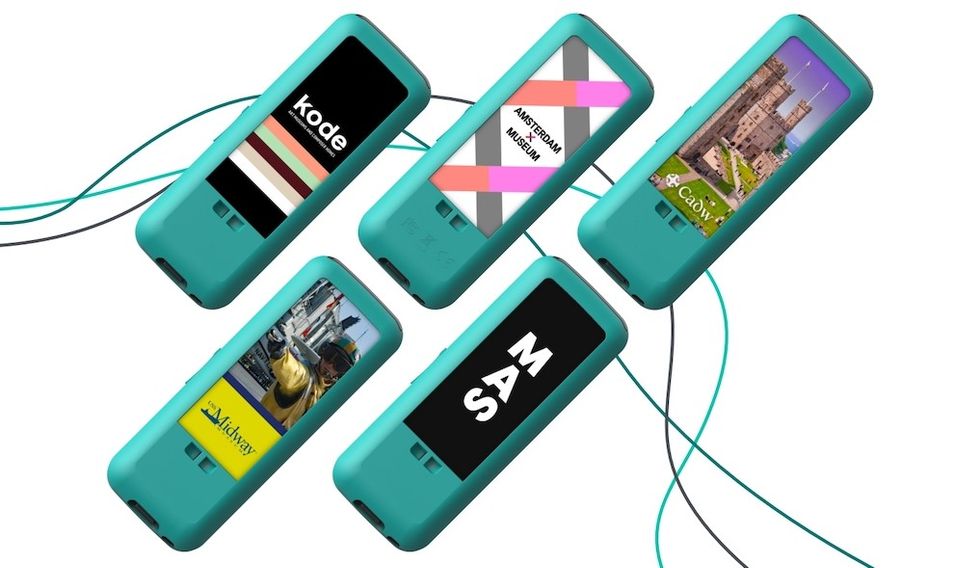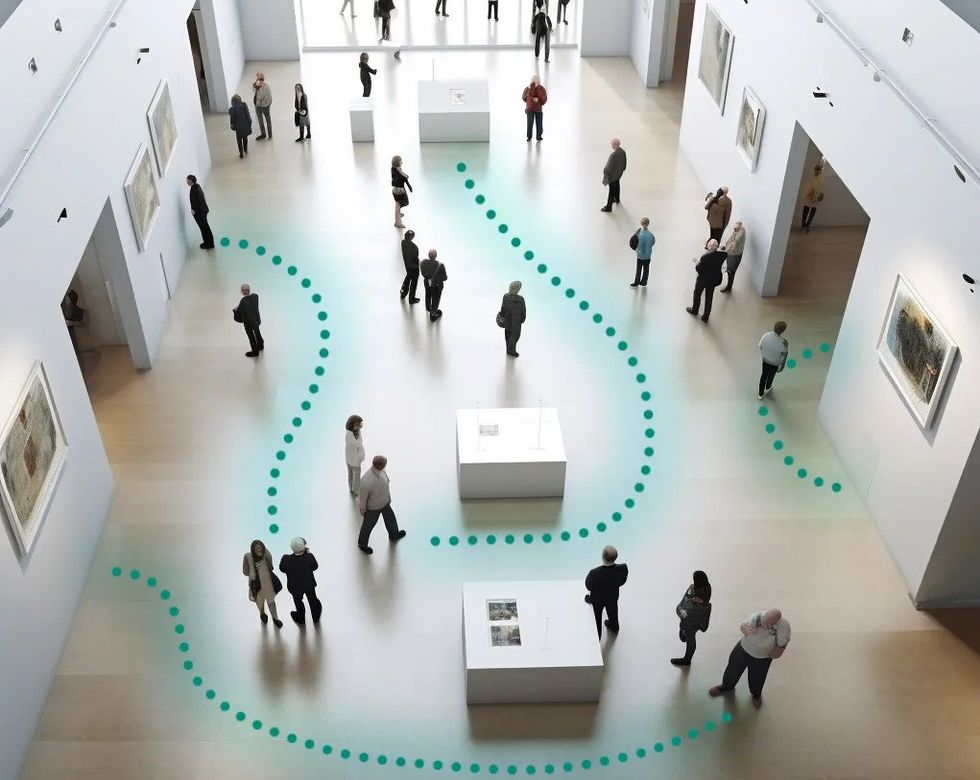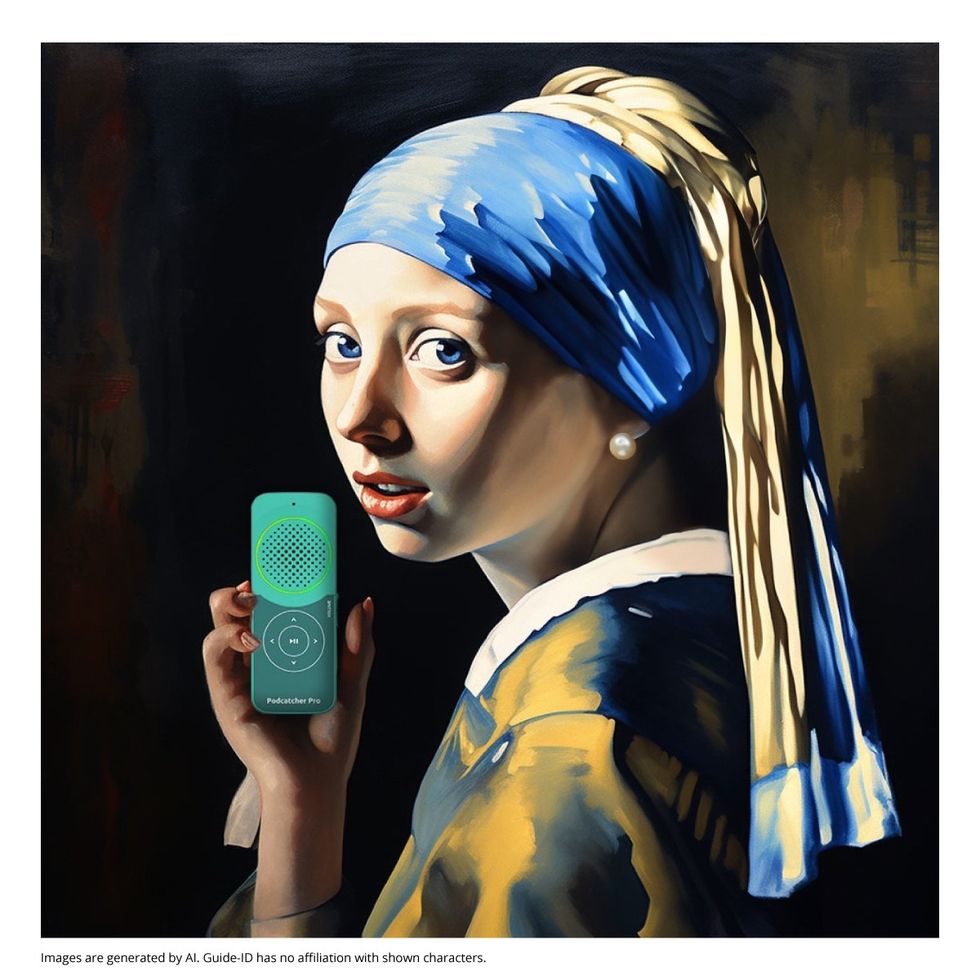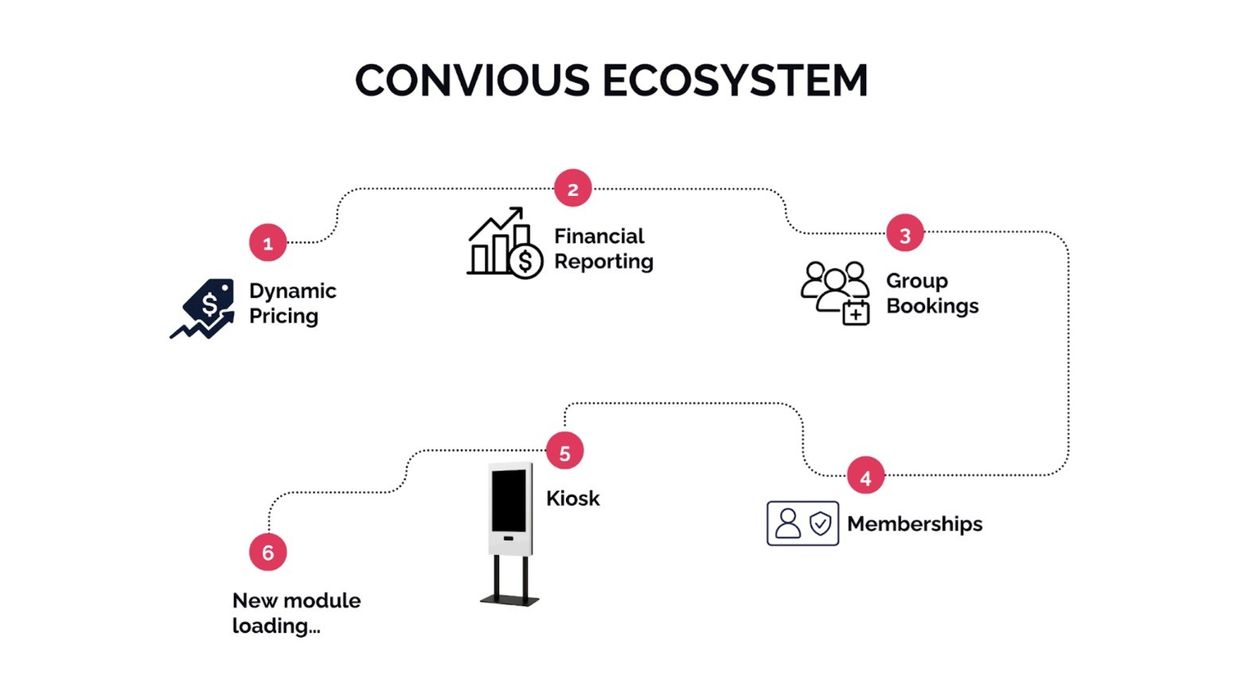Guide-ID, the audio guide specialist, has helped to unlock stories at museums, cultural institutions and other venues around the globe, thanks to its Podcatcher product, the world’s easiest audio guide. This tech has since enabled the sharing of over 625 million stories, cutting out complex technologies or unnecessary distractions.
Now, the firm has built on the design of the popular, no-nonsense product to create a brand new, next-generation product, the Podcatcher Pro, which it calls the world’s smartest audio guide. This will continue to allow guests to enjoy engaging stories from the world’s leading museums and attractions, alongside new features such as a tour guide option and different audio-triggering solutions, as well as audio mixing possibilities and enhanced Hi-Fi audio quality.
The new player comes with the release of a new platform, which includes a smart audio tour manager with AI integration. This will mean that clients can upload and manage their tour content, and let AI generate content, such as text-to-audio, in multiple languages with different voice-overs options. In addition, users will now benefit from visitor insights on the tour performance, for instance, they will be able to access real-time data on the most listened-to audio stop or visitor heatmaps.
To find out more about Guide-ID’s journey so far and its mission to make content as accessible as possible, as well as what the new Podcatcher Pro can offer, we speak to founder and CEO Frits Polman.
The inspiration behind the Podcatcher
Frits Polman says he has had a passion for technology ever since owning his first computer in 1986, aged 13. While most of his friends had the Commodore 64, Polman’s computer was a Sharp MZ-800 for which there was almost no software, meaning he was inspired to make it himself. From this, a lifelong love of tech was born.
He went on to study both computer technology and business economics at university and started his first company shortly after graduating, along with a fellow student.
“I founded my first company in 1997,” he explains. “We made custom internet-based software, and we worked with a couple of museums, creating custom software for them here in the Netherlands. That’s how I first got in touch with the museum sector.”
In 2004, he was walking through a museum with one of its curators, who was telling him stories about the items in the collection as they passed:
“I thought, ‘Okay, this makes it way more interesting to be in a museum. How can I use tech to tell those stories to everyone in the museum? That's where the idea started for Guide ID.”
Polman then made an initial version for a predecessor of the iPhone, the PDA. It was soon replaced by a new design, the Podcatcher – the world’s easiest audio guide. This innovation made it possible to enjoy a museum’s collection without distractions and without looking at a screen.
The mission behind Guide-ID
Polman says the mission of Guide-ID has not changed since that eureka moment with the museum curator in 2004:
“Our mission is to tell stories. I believe that education is the passport to the future, and storytelling is the main key to education. If you want to educate people, storytelling is the best tool that you have. Ever since we were cavemen, we’ve been learning and gaining knowledge and passing information forward through storytelling.”
This means, he adds, that learning through stories is ingrained, it is something our brains are used to:
“It’s easier for our brains to do it that way than to do it by looking at smartphone screens. Smartphones have only been around for 14 years, whereas storytelling has been around for 200,000 years.”
Guide-ID has two key goals, says Polman:
“Firstly, we want to share as many stories as possible, because we think that's the way to educate people. And, we want to do that in the most traditional way, which is by listening, by audio. We use the most modern tech to share audio without any distractions from small screens or from having to download something or connect to Wi-Fi. It should be seamless.
“Secondly, we want to ensure that these stories are available to all visitors. So, that means that you need a device that is suitable for all visitors without any learning curve. The stories must be available in the language of all the visitors, and to suit different levels, for instance, parents and kids.”
Accessibility is key
The desire to be as accessible as possible informs all of Guide-ID’s design choices, says Polman.
“There are a lot of other companies out there, but we are the only one to provide a platform that is available for all visitors. There are lots of firms doing tours through apps. But what do you do with kids below 10 or people above 65? Do you want to have everyone use their phone? Not everyone has a smartphone. It was key for us to make something available for everyone.”
It was this goal to make something that everyone could use that led to the creation of the first Podcatcher product.
“We wanted to make the easiest audio guide so that it was genuinely available for everyone. There is no punching in numbers or having some kind of complex user interface. It's just point and listen; everybody knows how to point and then listen. And that’s basically what we still do. If you see something of interest you just point at it, and it starts playing the story.
“Now, we are releasing Podcatcher Pro, which we are calling the world's smartest audio guide. It has lots of more features to it, but it is still guided by that fundamental principle.”
Cloud-based content
Going into more detail about the technology that makes the Podcatcher work, Polman explains that the content is held on a cloud-based platform, and synced overnight to all the venues around the world that are using Guide-ID.
“That means that if there is anything wrong with the internet during the day, every site worldwide can still share their stories. We have designed the technology so that anyone in a museum can easily adjust and add new stories in that cloud-based platform and the next day, the visitors will be able to listen to those adjustments or new stories as well.”
At the same time, every visitor leaves their own record of what they liked and where they stopped to listen.
“That is synchronised back to the same cloud system, which gives a lot of smart insights to the museum because they can see which are the most popular stops and think about what they can do to make the less popular stops more engaging.”
Introducing Podcatcher Pro
The Podcatcher Pro is a completely new design of the initial Podcatcher hardware, but still based on the same principles.
“You can imagine that the hardware from 2009, it's now a little old fashioned,” says Polman. “So, we’ve taken a big leap forward, and we think the technology we have put into the new Podcatcher Pro can be there for the next decade again.”
One new feature is ultra-wideband radio technology. This makes many new features possible, such as automatic triggering:
“That means that it can do things like play automatically when you enter a room, or increase the volume as you walk towards a work of art. It also has sensors, like those in a Wii controller, so you can use it as a controller for gaming. If you want to have an interactive experience somewhere in the museum, for instance, a big projection of a game, you can use the Podcatcher Pro to control that game."
Podcatcher Pro also has group tour functionality. For group tours, the group leader can use it to transmit the story to the whole group simultaneously.
“In addition, because it's audio only, we have made a big step in the audio quality as well with this new product. It's really high-end audio.”
New AI tools and more
The other part of the upgrade is the release of a new internet platform to accompany the Podcatcher Pro. This includes new artificial intelligence (AI) tools which can help the museum or attraction to create the stories.
“Based on a basic description of an object, it can write the audio stories for the museum translated into any language they want and make a voiceover out of it instantly within the platform, for free. Until now, creating content has been quite a time-consuming process, and it's also very expensive. But with artificial intelligence, they can just create it by themselves."
“That's a big thing for us because that opens the possibility of generating stories for all objects. I can imagine that there will be a story for each object in a museum, in any language, for any visitor at any level. One of the key things is that they want to entertain and educate their visitors. And with our platform, they can easily do that for all visitors in any language, for any object.”
There are other benefits for the clients too, such as smart insights:
“This gives them a tool to monitor how happy the visitors are. So, there's this feedback loop constantly on a day-to-day basis, which helps them to provide a better service.”
A scalable solution
Guide-ID defines its marketplace as any cultural venue with stories to share.
“At the moment, we have sites from 20,000 visitors up to 5 million a year. The whole platform - the technology, the hardware and the software - is scalable and we can maintain that from the Netherlands.
“We have shipped Podcatcher to 21 countries already. We just ship the system, and they provide the stories. Guide-ID serves all cultural sites, it could be museums or heritage sites, sports stadiums or churches. We’re also working with brand homes and brand experiences, for instance, we work with several chocolate factories and breweries."
“The scalability is key, and the more we do, the easier it is for us to scale towards other markets as well. Because we are a subscription-based company, none of our clients have to invest in our system. It's a monthly subscription, which I think is important if you look at sustainability. For example, we have complete control over all the hardware worldwide so when it comes to refurbishing them, we can do that ourselves to maximise the lifespan of all the hardware. We still have Podcatcers from 2009 out there.
“When the lifetime of the Podcatcher is over, we get it back to our office and we sustainably dismantle the product.”
Having just one product that can serve many different types of venues also adds to the sustainability of the Podcatcher.
“The museum doesn’t need to buy tablets or iPads and then an audio guide system. They just have one supplier. During the contract, we also provide 24/7 support."
Podcatcher in action
When it comes to happy customers, Podcatcher is in use at leading museums and cultural institutions across the globe. One example is The Amsterdam Museum, which has used Guide-ID’s tech to create audio tours for all of its temporary exhibitions.
The museum was in search of a new audio tour device that met its differing requirements and could be integrated with its existing visual storytelling and interactive system. Guide-ID was able to connect Podcatchers to the museum’s existing tech. After bringing in the new system, the audio guide pick-up rate rose to 67.2%, with 60% of guests listening at least half of the stops.
The solution also meant that the museum could collect guest data, which in turn helps it to tailor future content more effectively.
Elsewhere, the USS Midway Museum was looking to upgrade from its previous complex and pricy system, which gave it no control over the content. Now, it can add its own stories, and guests can tour the historical vessel with an easy-to-use audio guide.
As well as reducing its costs, the museum saw a 15% increase in audio tour uptake. It also reported 35% faster waiting lines.
What’s next for Guide-ID?
The release of the Podcatcher Pro is a milestone for the company. Yet, it is not putting its feet up following this innovation:
“We are a tech company; we keep on adding features every month, and anyone who has a contract with us gets the new features automatically,” says Polman. “Right now, we have a roadmap that contains all the new features that will be released in the next 12 months.”
The fascinating collections and stories that are held by our cultural institutions deserve to be heard and enjoyed without any distractions. Guide-ID’s audio-only Podcatcher guides ensure that all eyes are on the object, while all ears are on the story.
To find out more about Podcatcher and to try a free demo from Guide-ID, please click here.
Charlotte Coates is blooloop's editor. She is from Brighton, UK and previously worked as a librarian. She has a strong interest in arts, culture and information and graduated from the University of Sussex with a degree in English Literature. Charlotte can usually be found either with her head in a book or planning her next travel adventure.















 TM Lim and Adam Wales
TM Lim and Adam Wales









 Toby Harris
Toby Harris Hijingo
Hijingo Flight Club, Washington D.C.
Flight Club, Washington D.C.
 Flight Club Philadelphia
Flight Club Philadelphia Flight Club Philadelphia
Flight Club Philadelphia Bounce
Bounce Hijingo
Hijingo Bounce
Bounce
 Fernando Eiroa
Fernando Eiroa











 Nickelodeon Land at Parque de Atracciones de Madrid
Nickelodeon Land at Parque de Atracciones de Madrid Raging Waters
Raging Waters  Mirabilandia's iSpeed coaster
Mirabilandia's iSpeed coaster Parque de Atracciones de Madrid
Parque de Atracciones de Madrid Ferracci at the ribbon-cutting ceremony for Nickelodeon Land at Mirabilandia, with (left) Marie Marks, senior VP of global experiences for Paramount and (cutting the ribbon) Sabrina Mangina, GM at Mirabilandia
Ferracci at the ribbon-cutting ceremony for Nickelodeon Land at Mirabilandia, with (left) Marie Marks, senior VP of global experiences for Paramount and (cutting the ribbon) Sabrina Mangina, GM at Mirabilandia Tropical Islands OHANA hotel
Tropical Islands OHANA hotel Elephants at Blackpool Zoo
Elephants at Blackpool Zoo  Tusenfryd
Tusenfryd
 Andrew Thomas, Jason Aldous and Rik Athorne
Andrew Thomas, Jason Aldous and Rik Athorne







